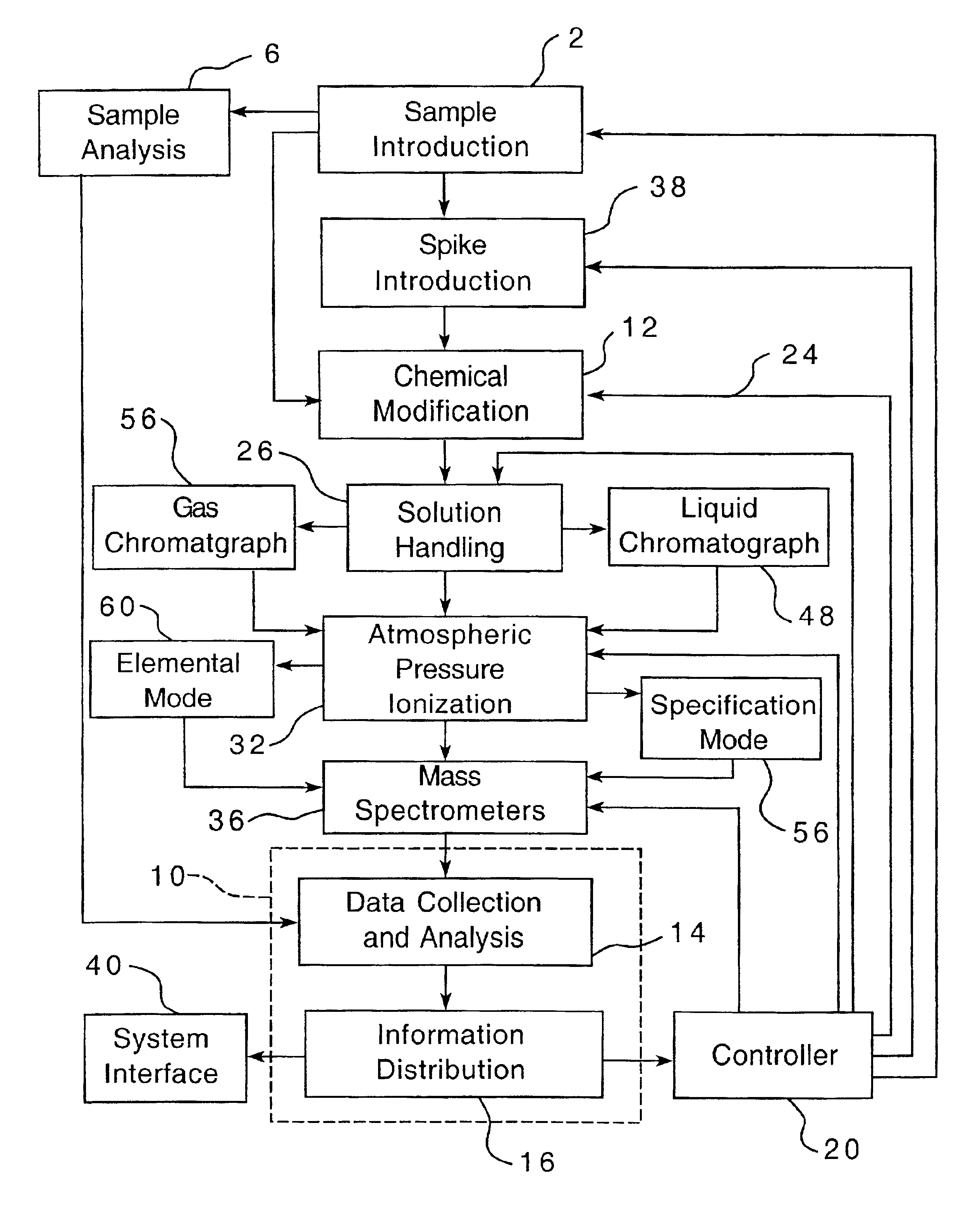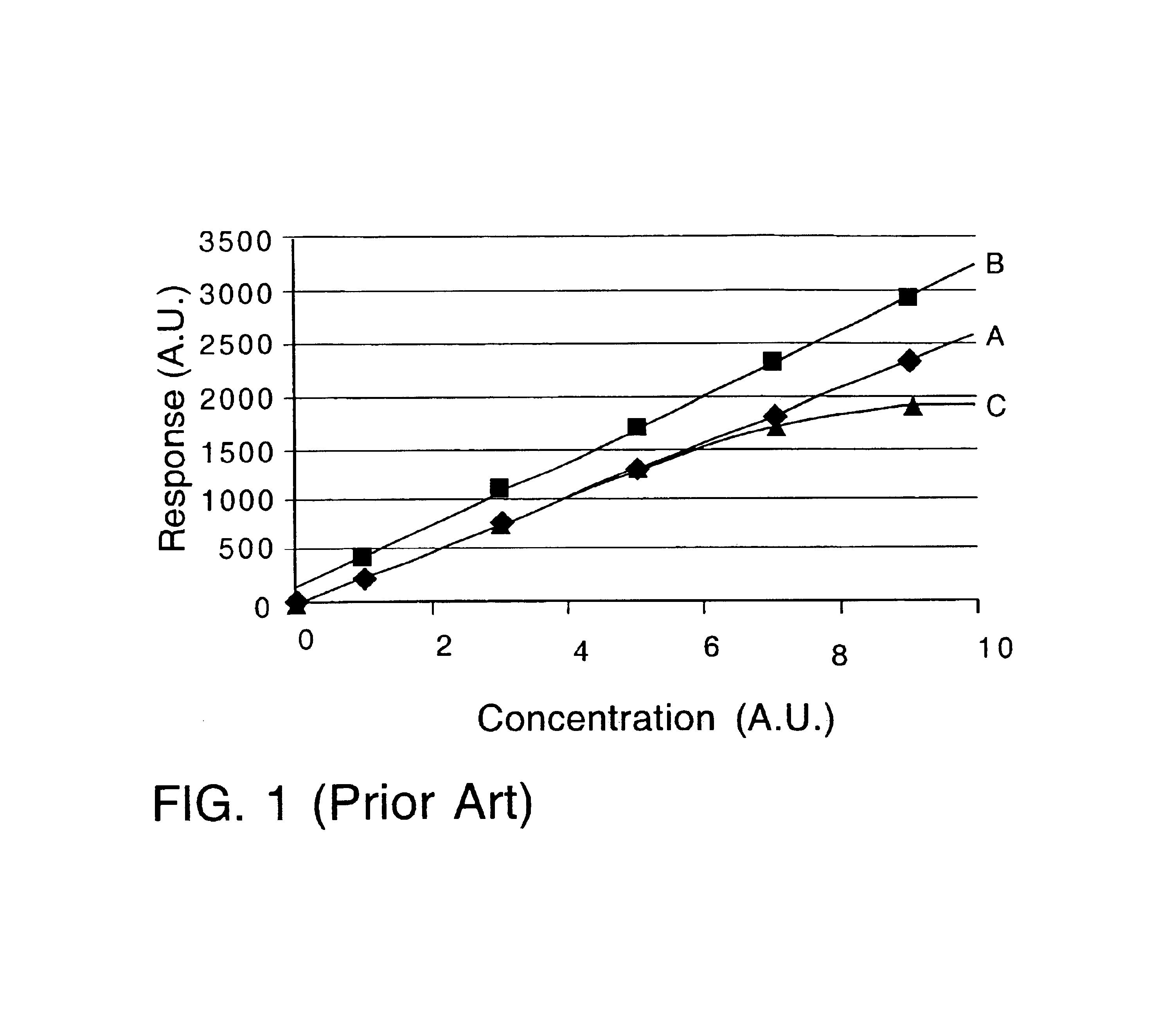Automated in-process ratio mass spectrometry
a technology of mass spectrometry and in-process ratio, which is applied in the field of in-process, automated analysis using a ratio measurement, can solve the problems of frequent recalibration, unattended operation of the mass spectrometer, and inability to achieve accurate traditional techniques, so as to enhance the characterization of an analyte and enhance the measurement
- Summary
- Abstract
- Description
- Claims
- Application Information
AI Technical Summary
Benefits of technology
Problems solved by technology
Method used
Image
Examples
Embodiment Construction
[0057]The term “specie” as employed herein shall refer to elemental species, ionic species, molecular species, complex species such as organometallic species and any other species which may be adapted for qualitative and quantitative analysis using the present invention.
[0058]As used herein, the term “ratio” shall refer to an isotopic ratio of a specie and / or an element.
[0059]The term “fluid” as employed herein in respect of a mass stream containing either “specie or element” or “spike” or both in the form of, but not limited to, liquid or gas.
[0060]The term “threshold” as employed herein in respect of a level of a “specie or element” above which the “specie or element” can be determined quantitatively using present invention.
[0061]The term “quantitative detection limit of an instrument” means the lowest level of concentration of a particular element or specie which an instrument can detect quantitatively.
[0062]In this invention the isotopically enriched standard spikes added to the...
PUM
 Login to View More
Login to View More Abstract
Description
Claims
Application Information
 Login to View More
Login to View More - R&D
- Intellectual Property
- Life Sciences
- Materials
- Tech Scout
- Unparalleled Data Quality
- Higher Quality Content
- 60% Fewer Hallucinations
Browse by: Latest US Patents, China's latest patents, Technical Efficacy Thesaurus, Application Domain, Technology Topic, Popular Technical Reports.
© 2025 PatSnap. All rights reserved.Legal|Privacy policy|Modern Slavery Act Transparency Statement|Sitemap|About US| Contact US: help@patsnap.com



